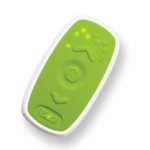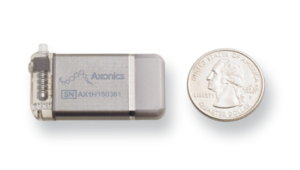Axonics for Overactive Bladder
Is your overactive bladder controlling your life? Do you worry about where the bathroom is in stores and restaurants? You’re not alone. Overactive bladder affects an estimated 50 million people in the US.
Lots of women give up on OAB treatment after trying a medication or two. Side effects, expense, and lack of meaningful results are common reasons. Sacral Neuromodulation from Axonics can help you get your life back. It’s long-term, has positive patient reviews, and the side effects are minimal. Plus, you can test Axonics therapy first to see if it’s right for you.
What is Axonics Therapy?
Axonics Therapy is a new and improved type of Sacral Neuromodulation that can help patients with overactive bladder, urinary urge incontinence, and urinary retention. It may also be used in patients with bowel incontinence.
Treating these conditions with a long-term solution means you can get back the life you had before urinary problems.
What is Sacral Neuromodulation?
Sacral Neuromodulation gently stimulates the nerves that control the bladder. Stimulation can improve your symptoms by restoring normal communication between the brain and bladder.
How does Axonics Sacral Neuromodulation Work?
Axonics therapy uses a miniature implant to gently stimulate bladder control nerves.
Evaluation: Patients will be able to experience the level of symptom relief using a temporary system. The temporary system is not implanted so it may be easily removed.
Long-term Therapy: Patients who want long-term relief will have an outpatient procedure to insert the miniature implant. The Axonics implant is placed just under the skin in the upper part of your buttock.
Who is Axonics Therapy for?
Axonics Therapy isn’t for everyone, but it is approved for patients with:
Overactive Bladder (OAB) – Strong, sudden urges to urinate that may lead to leaking urine.
Urinary Urge Incontinence – Bladder leakage that happens in conjunction with a sudden, strong or frequent urge to urinate
Urinary Retention (Non-Obstructed) – Urinary retention is the inability to pass all the urine in your bladder. If your urinary retention is not caused by a physical blockage (e.g. BPH, stricture, prolapse, etc.), Axonics Sacral Neuromodulation may be a treatment option.
Axonics therapy is not for patients with stress urinary incontinence (Bladder leakage that occurs when you put pressure on the muscles around your bladder, like when you cough, laugh, sneeze, lift something, or exercise)
What makes Axonics Sacral Neuromodulation Different?
One of the biggest differences between Axonics Sacral Neuromodulation and others is the small, simple to use remote programmer.

Every sacral neuromodulation device will require an outside controller, but Axonics simplified the device. The Axonics remote can be used with one hand, never needs to be recharged, and no pairing is required.
FAQs
How big is the Axonics implant?

The Axonics implant is small – only 22mm by 42mm and 6mm thick. It’s placed during a minimally invasive outpatient procedure.
How long does the Axonics implant last?
The Axonics implant provides therapy for at least 15 years. Patients only need to recharge the device (wirelessly) once a month. Other devices require biweekly charging.
Does insurance cover Axonics Sacral Neuromodulation?
Most insurances cover Axonics therapy, including Medicare.
Next Steps
Schedule an appointment. Whether you’ve tried multiple therapies for OAB or none, the next step is talking to your urologist about the next step in your OAB treatment.






